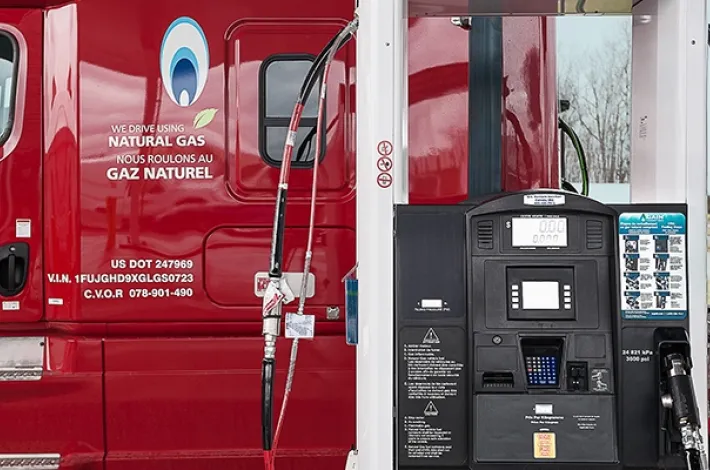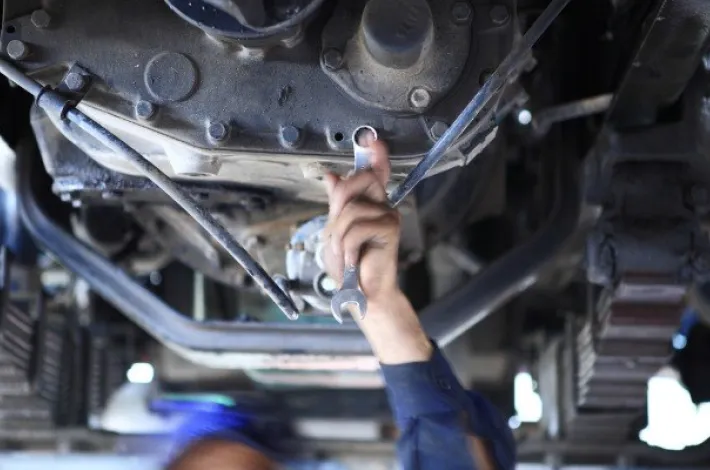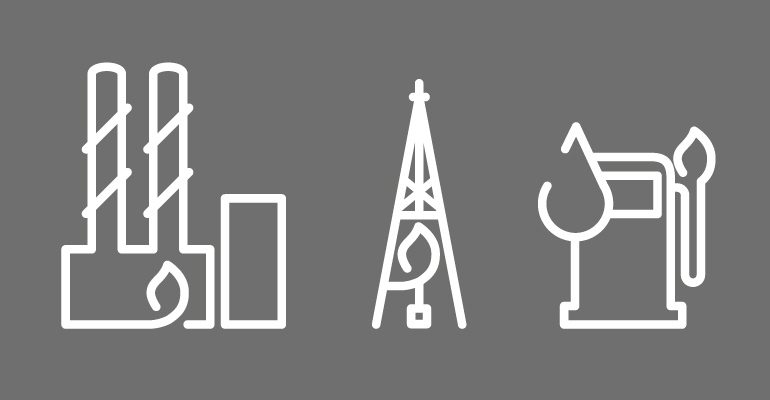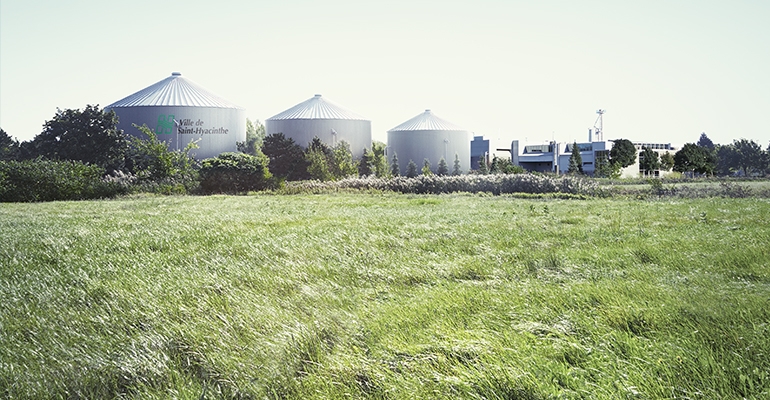
Natural gas for vehicles: the future of heavy transport, today
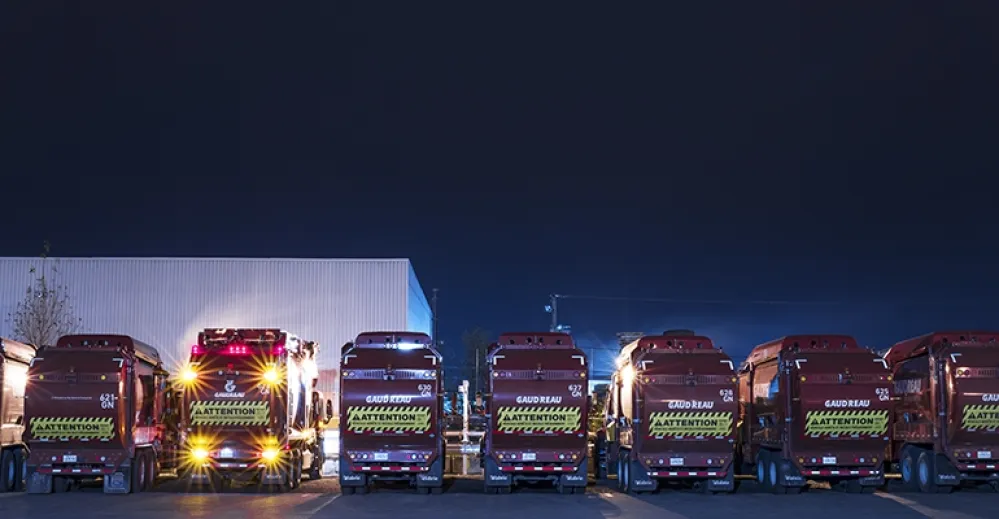
Transportation is one of the biggest greenhouse gas (GHG) emitters, but it is also the industry with the greatest potential for emissions reduction. While electric cars are gaining in popularity, natural gas has become a worthy solution for the future of heavy transport.
In its 2030 Energy Policy , Québec “favours a low-carbon economy” by reducing the consumption of petroleum products by 40%, in other words, cutting the province’s energy consumption by close to half. The transportation sector alone accounts for 80% of this consumption. It emits 41% of Québec’s GHGs, 82% of which comes from road transport.
In the last two decades, key players in the economy have reduced their GHG emissions, a number of polluting industries have evolved or disappeared, companies have improved their energy efficiency, and individuals have abandoned oil heating.
But the transport sector has not kept pace with Québec’s energy developments. In fact, its GHG emissions have even grown by 30% since 1990. As such, this sector has a big role to play in the province’s energy future.
Replacing oil
The good news is several fuels already exist that are more eco-friendly than gasoline and diesel. Among these, electricity and natural gas are the most promising in terms of their properties, cost, emissions and infrastructures. The first is definitely ideal for automobiles, and the second is best suited to heavy transport.
Indeed, a natural gas engine emits up to 25% less GHG than a diesel engine and reduces the fine particle emissions causing smog by 97%. It is also less costly in the long term, emits less smell and is quieter. And the gap is growing because manufacturers are producing increasingly efficient models. In fact, the Cummins Westport engine features the latest developments in natural gas for vehicles (NGV). It is the first engine to meet the emissions standard of less than 0.02 grams of nitrogen oxide per horsepower-hour. This engine’s technology does not require complex treatments to counter polluting emissions, such as particulate filter maintenance or selective catalytic reduction using urea.
There are already more than 600 trucks using NGV in our province, and over 40,000 in North America. Several leading carriers have fully or partially converted their fleets.
The number of NGV stations in Québec is also expanding rapidly, with 27 to date (18 private and 9 public ), compared with just 2 in 2013. And more stations are planned for in 2018.
Soon, multi-fuel stations will be built, where cars will be able to charge their batteries while trucks fill up with natural gas.

Toward renewable sources
NGV is all the more beneficial for the environment when it comes from renewable sources, which boost GHG reductions to 99.4% compared with diesel. These sources, produced from the decomposition of organic matter, are abundant.
Biomethanization—the production of natural gas from domestic waste or agricultural residue—is gaining ground in Québec. Already, some 15 projects are underway in local communities, helped by Énergir promoting the development of renewable sources, the Québec heavy transport sector will be able to help the province achieve its GHG reduction targets and ensure a promising energy future.
You may also like...

